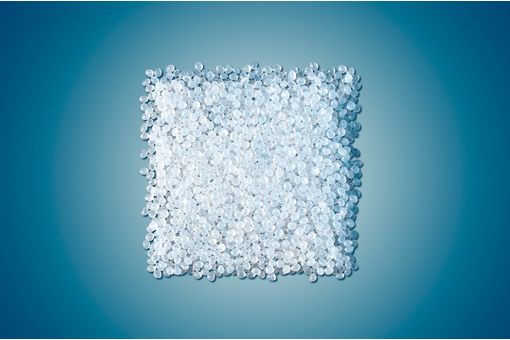Interviews
Indian textile sector needs to take a moon shot – Dr Ramkumar
07 Dec '09
10 min read

“In a recent splendid editorial page article in The Hindu, India's father of Green Revolution, Dr. M. S. Swaminathan has articulated the factors that have enabled tremendous crop yields in India four decades ago. According to Dr. Swaminathan, important factors that contributed to the green revolution were: technology; communication/services; supporting government policy and enthusiasm by the end-user community.
“The Indian textile industry is at cross-roads now and the aforementioned factors with regard to green revolution as given above, fit exactly with the current requirements of the Indian textile industry. The industry needs latest technology, favorable government polices and more importantly knowledge transfer.
“The knowledge transfer should not only involve technology but it should also focus on market know-how and trade information. In other words, Indian textile industry should adopt a revolution called “Tex- Revolution”. The need of the hour is the greater adaptation of technology and know-how transfer for the Indian textiles industry. This is what “Tex-Revolution” or Textile Revolution is!
So what should the Indian textile industry do? He queried. Indian textile industry is predominantly cotton based and is export dependent. The industry mix on an average is 60 % cotton and 40 % synthetics. So for, the Indian textile industry has targeted traditional textile markets such as USA and Western Europe. Recession in these developed economics since December-2007 has had tremendous negative impact on the global economy and more importantly the exports from India.
“This situation has given a serious beating to India's exports and in particular to the Indian textile Industry. As textile products are not life saving essentials, with the disposable incomes shrinking in advanced nations such as USA, European Union, it is necessary for the Indian textile Industry to take a “Moon Shot” and chart out new plans for growth and development. The Tex-Revolution should involve adaptation of new technology to develop new products or significantly enhance the value of products and target untapped new markets.
“In addition to taking these little steps in bringing about Tex-Revolution, collaboration and cooperation have to be aggressively sought after, to bring in raw materials and technologies to fulfill the requirements of the Indian textile industry. More importantly, these factors are very critical now due to the raw material shortfalls such as cotton.
“All major industry based associations such as The Southern India Mills' Association, Tirupur Exporters Association Confederation of the Indian Textile Industry, etc., all are making coordinated efforts to alleviate the current cotton crisis faced by the industry. As the Indian textile industry is predominantly cotton based, the unavailability of the basic raw material can lead to negative economic effects.
“And as the cotton end-products are targeted towards exports, the impact will be very drastic. These current situations such as lack of cotton, lack of weaving and other technical textile machines and export dependency, are all serious concerns faced by the Indian textile industry”.
“The Indian textile industry is at cross-roads now and the aforementioned factors with regard to green revolution as given above, fit exactly with the current requirements of the Indian textile industry. The industry needs latest technology, favorable government polices and more importantly knowledge transfer.
“The knowledge transfer should not only involve technology but it should also focus on market know-how and trade information. In other words, Indian textile industry should adopt a revolution called “Tex- Revolution”. The need of the hour is the greater adaptation of technology and know-how transfer for the Indian textiles industry. This is what “Tex-Revolution” or Textile Revolution is!
So what should the Indian textile industry do? He queried. Indian textile industry is predominantly cotton based and is export dependent. The industry mix on an average is 60 % cotton and 40 % synthetics. So for, the Indian textile industry has targeted traditional textile markets such as USA and Western Europe. Recession in these developed economics since December-2007 has had tremendous negative impact on the global economy and more importantly the exports from India.
“This situation has given a serious beating to India's exports and in particular to the Indian textile Industry. As textile products are not life saving essentials, with the disposable incomes shrinking in advanced nations such as USA, European Union, it is necessary for the Indian textile Industry to take a “Moon Shot” and chart out new plans for growth and development. The Tex-Revolution should involve adaptation of new technology to develop new products or significantly enhance the value of products and target untapped new markets.
“In addition to taking these little steps in bringing about Tex-Revolution, collaboration and cooperation have to be aggressively sought after, to bring in raw materials and technologies to fulfill the requirements of the Indian textile industry. More importantly, these factors are very critical now due to the raw material shortfalls such as cotton.
“All major industry based associations such as The Southern India Mills' Association, Tirupur Exporters Association Confederation of the Indian Textile Industry, etc., all are making coordinated efforts to alleviate the current cotton crisis faced by the industry. As the Indian textile industry is predominantly cotton based, the unavailability of the basic raw material can lead to negative economic effects.
“And as the cotton end-products are targeted towards exports, the impact will be very drastic. These current situations such as lack of cotton, lack of weaving and other technical textile machines and export dependency, are all serious concerns faced by the Indian textile industry”.
Popular News
Leave your Comments
Editor’s Pick
Ata Turgutalp
Eliar Elektronik San. A.S.
Jason Kent
British Textile Machinery Association (BTMA)
Bijou Kurien
Retailers Association of India (RAI)
































-Ltd..jpg?tr=w-120,h-60,c-at_max,cm-pad_resize,bg-ffffff)





.jpg?tr=w-120,h-60,c-at_max,cm-pad_resize,bg-ffffff)
.jpg?tr=w-120,h-60,c-at_max,cm-pad_resize,bg-ffffff)






